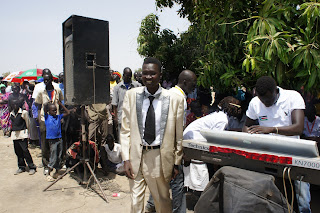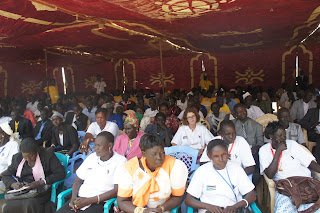There is a really great looking exhibition opening in London next month. Photographer and filmmaker, Frederique Cifuentes spent 6 years in Sudan documenting ruins and remnants of the colonial period(s), "this photographic and video project is an exploration of the mechanics of empire through its official buildings, private residencies, cinema houses, railways, irrigation canals and bridges."
Its more than that too, because Cifuentes doesn't just look at the remaining material culture of empire, she goes further and explores the way that these buildings (and ruins) have been used and re-appropriated in the post-colonial period. What has actually happened to these structures since their originals owners left? Who took over and why? What does this tell us about the different ways people relate with the built environment and the past? What does this tell us about ideas about heritage in Sudan?
The exhibition also uses photographic material from Durham University's Sudan Archive. This archive has tens of thousands of photos and its a comparatively unexploited resource. So this is also a great opportunity to see some of the archival material. The exhibition will go to Durham, and then Khartoum (next year).
Its more than that too, because Cifuentes doesn't just look at the remaining material culture of empire, she goes further and explores the way that these buildings (and ruins) have been used and re-appropriated in the post-colonial period. What has actually happened to these structures since their originals owners left? Who took over and why? What does this tell us about the different ways people relate with the built environment and the past? What does this tell us about ideas about heritage in Sudan?
The exhibition also uses photographic material from Durham University's Sudan Archive. This archive has tens of thousands of photos and its a comparatively unexploited resource. So this is also a great opportunity to see some of the archival material. The exhibition will go to Durham, and then Khartoum (next year).












